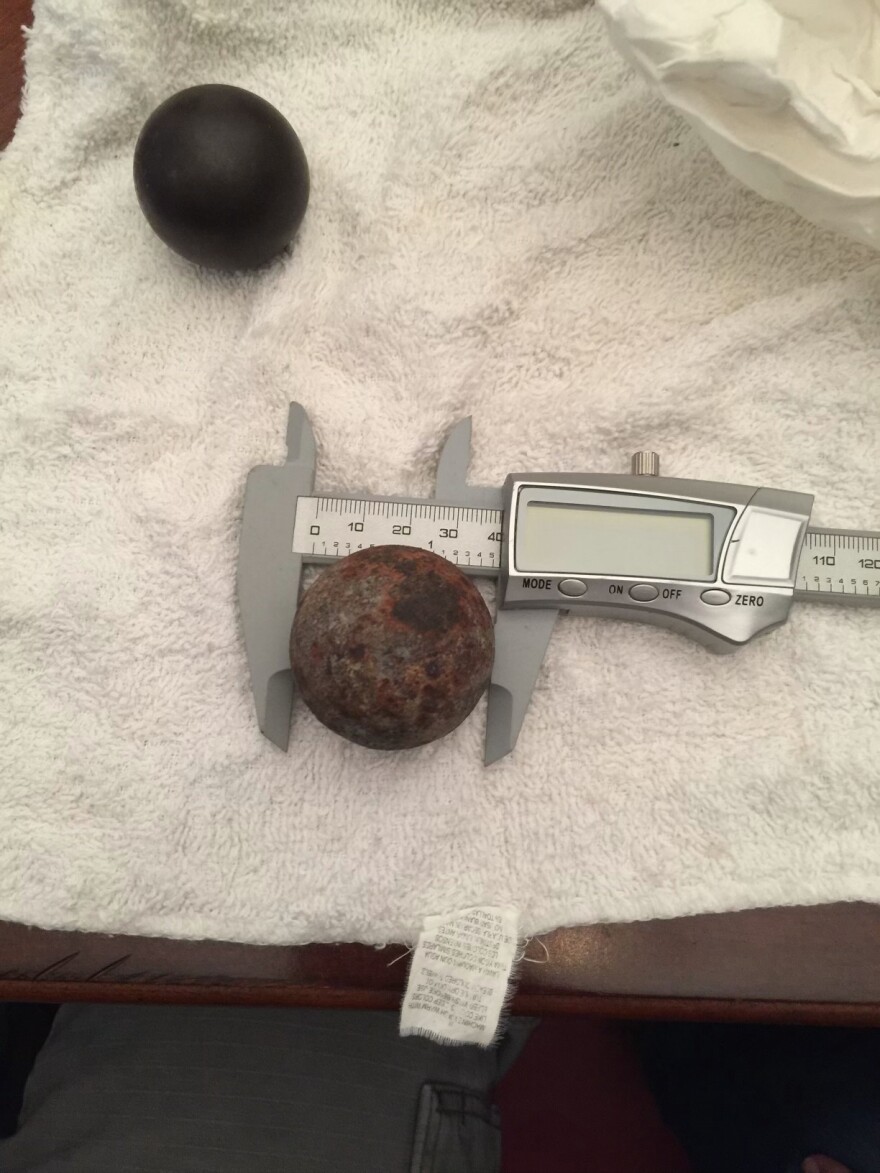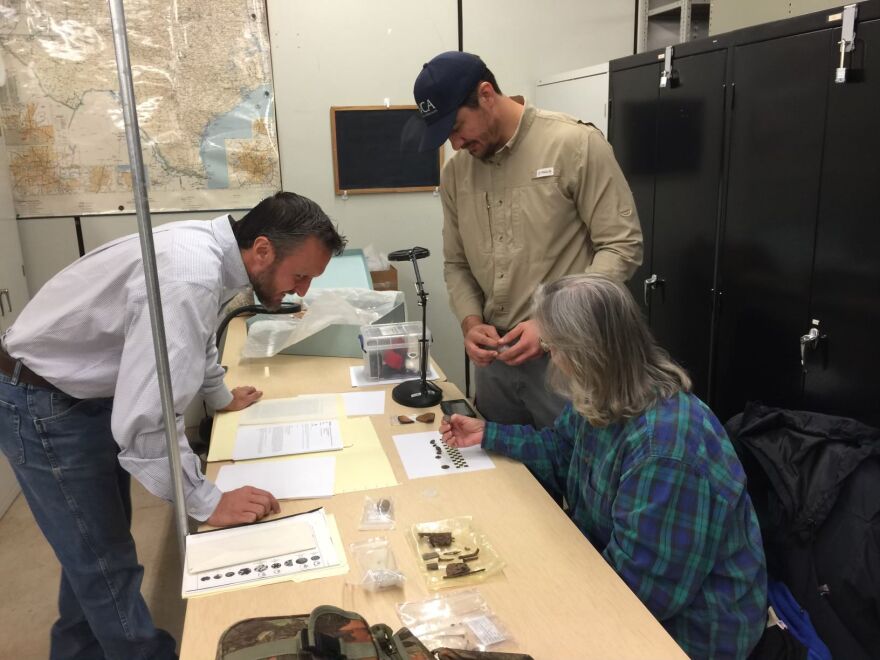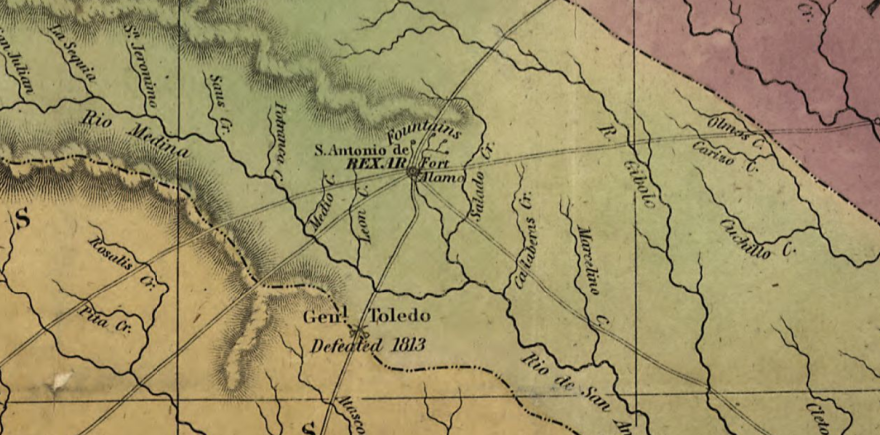The Battle of Medina was fought just south of San Antonio in 1813. But as large and significant as this battle was, no one is exactly sure where the battle site is located.
Brandon Seale, a history podcaster, is spearheading the effort to locate the site. He spoke with TPR's Jerry Clayton.
Jerry Clayton: Tell me about the significance of the Battle of Medina.
Brandon Seale: So the Battle Medina is the largest, bloodiest battle in Texas history, and yet it's largely unknown. It occurred in 1813, so [about 23] years before the better known events of the Texas Revolution in 1835-36. But it was a really important event ... in the history of the continent. It posed an army of Tejanos, Anglo American volunteers and of Native Americans against the might of the Spanish Empire.
So in 1813, Mexico was going through its war of independence. But it was really kind of a nadir, a low moment in that fight. And for the most part, the only place where the fight was really continuing at that point was in Texas. A little known fact is that Father Miguel Hidalgo, the one who gave the famous grito that set off the war of Mexican independence, was actually trying to reach San Antonio when he was ambushed and killed. And so San Antonio ... is where the flames of independence and the flames of revolution were still burning bright.
But it sets up and it ends rather tragically on Aug. 18, 1813, when about 1,900 Spanish regulars faced off with somewhere between 1,200-1,400 of these volunteers. And it ends disastrously for the proponents of Mexican independence. For the Texans in this battle, almost all of them are killed. We don't know how many people survived. It was maybe in the hundreds. The people who did survive couldn't tell people that they had been a part of this fight for most of their lives.
So it becomes a really formative event, too, in terms of how Tejanos think about their place within the larger Mexican nation project. And it's a really formative event in defining their participation in the events of the Texas Revolution of 1835-36.

Clayton: You've made several attempts to find the battlesite. I believe there are like three markers in three different places, but no real evidence so far. What have you been able to find?
Seale: It feels like a battle of this size … we should be able to find it more easily, right? There should be more evidence of it. But as you alluded to, there's actually three different battlefield markers today indicating a possible location for the battlefield of Medina, but no definitive concentration of artifacts have been found that would allow us to really say without a doubt that this was the spot. We've been able to find now a few scattered artifacts, a few tantalizing clues, but again, nothing quite definitive yet. So that's what kind of leads us to believe that we really need to undertake some actual dedicated field work to try and methodically identify a spot that we can say was where this battle happened.

Clayton: The American Veterans Archeological Recovery Project — it looks like it's going to be involved in the search. Tell me how all that came about.
Seale: So the American Veterans Archeological Recovery Project contacted us through our web page expressing an interest in getting involved in battlefield archeology in Texas. This is a group that has worked primarily on the eastern coast of the United States in Revolutionary War battles and Civil War battles. But they identified the Battle of Medina as an interesting first project ... because it's one that has been so little studied. And [also] because it is such a genuine mystery, it's going to allow ... AVAR to really deploy desktop archaeology, field archaeology, field surveys and all the things that they try to use for their veterans, because that's a really neat part for me about AVAR as well.
[AVAR is] a program that's targeted toward veterans, toward disabled veterans in particular. It engages in what they call rehabilitation archaeology. It's using archaeology to try and help veterans deploy the skills that they learned ... in their years of service and even on battlefields to try and advance the study of archeology [and], at the same time, help them regain that sense of mission, that sense of purpose and that sense of team the that sometimes is missing in the transition to civilian life.
Clayton: Brandon, we look forward to hearing the progress of the excavating when it happens later on this year, and I'd love to have you back on and talk about it again. Thanks for being here.
Seale: Thanks for having me.
Learn more about the project searching for the Battle of Medina at BrandonSeale.com.
TPR was founded by and is supported by our community. If you value our commitment to the highest standards of responsible journalism and are able to do so, please consider making your gift of support today.


